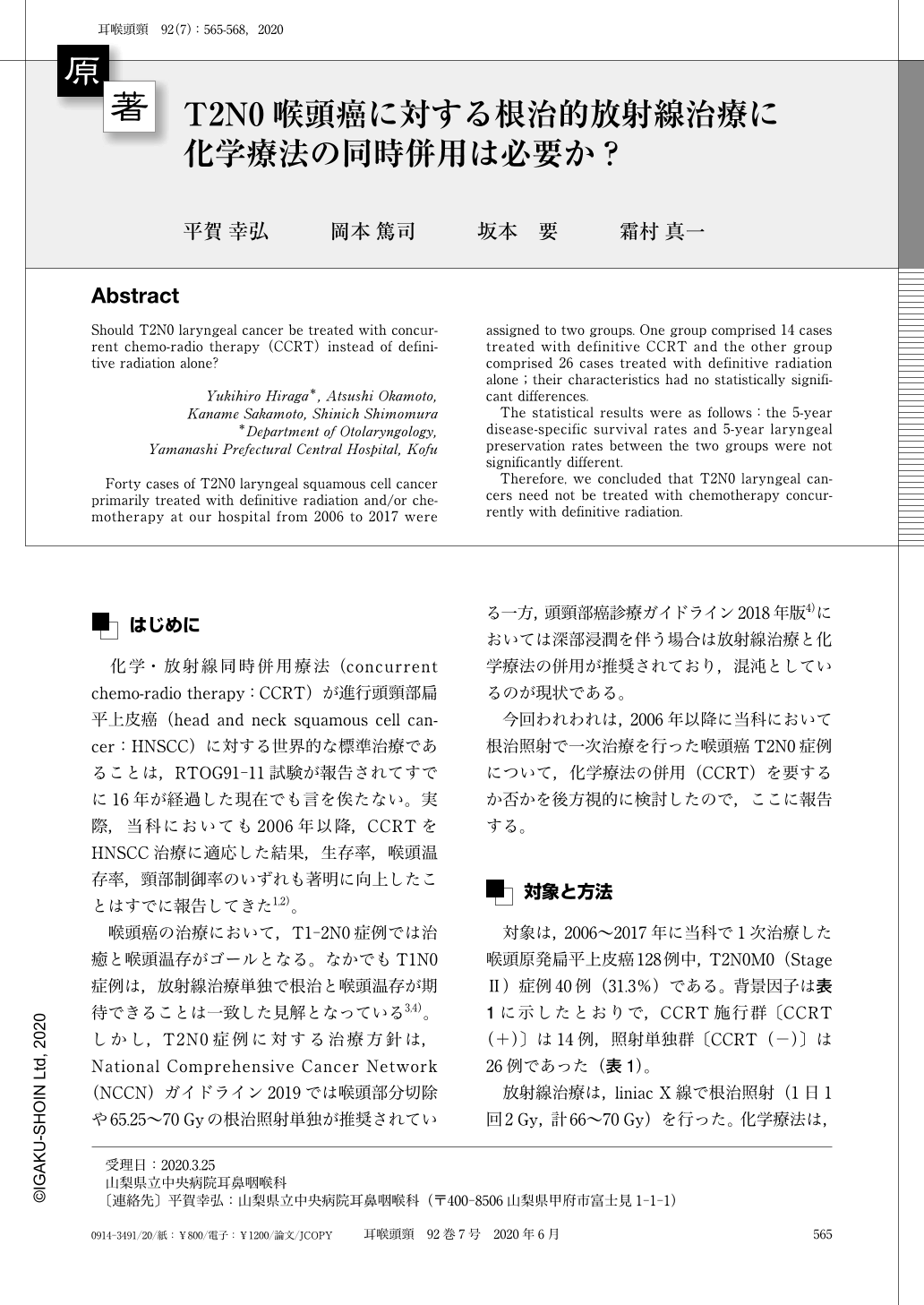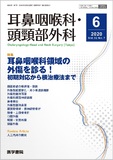Japanese
English
- 有料閲覧
- Abstract 文献概要
- 1ページ目 Look Inside
- 参考文献 Reference
はじめに
化学・放射線同時併用療法(concurrent chemo-radio therapy:CCRT)が進行頭頸部扁平上皮癌(head and neck squamous cell cancer:HNSCC)に対する世界的な標準治療であることは,RTOG91-11試験が報告されてすでに16年が経過した現在でも言を俟たない。実際,当科においても2006年以降,CCRTをHNSCC治療に適応した結果,生存率,喉頭温存率,頸部制御率のいずれも著明に向上したことはすでに報告してきた1,2)。
喉頭癌の治療において,T1-2N0症例では治癒と喉頭温存がゴールとなる。なかでもT1N0症例は,放射線治療単独で根治と喉頭温存が期待できることは一致した見解となっている3,4)。しかし,T2N0症例に対する治療方針は,National Comprehensive Cancer Network(NCCN)ガイドライン2019では喉頭部分切除や65.25〜70Gyの根治照射単独が推奨されている一方,頭頸部癌診療ガイドライン2018年版4)においては深部浸潤を伴う場合は放射線治療と化学療法の併用が推奨されており,混沌としているのが現状である。
今回われわれは,2006年以降に当科において根治照射で一次治療を行った喉頭癌T2N0症例について,化学療法の併用(CCRT)を要するか否かを後方視的に検討したので,ここに報告する。
Forty cases of T2N0 laryngeal squamous cell cancer primarily treated with definitive radiation and/or chemotherapy at our hospital from 2006 to 2017 were assigned to two groups. One group comprised 14 cases treated with definitive CCRT and the other group comprised 26 cases treated with definitive radiation alone;their characteristics had no statistically significant differences.
The statistical results were as follows:the 5-year disease-specific survival rates and 5-year laryngeal preservation rates between the two groups were not significantly different.
Therefore, we concluded that T2N0 laryngeal cancers need not be treated with chemotherapy concurrently with definitive radiation.

Copyright © 2020, Igaku-Shoin Ltd. All rights reserved.


